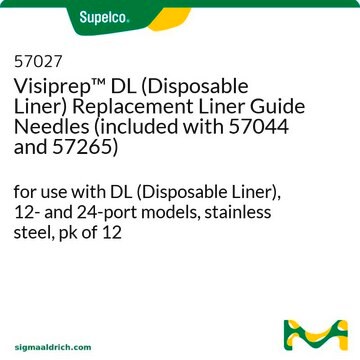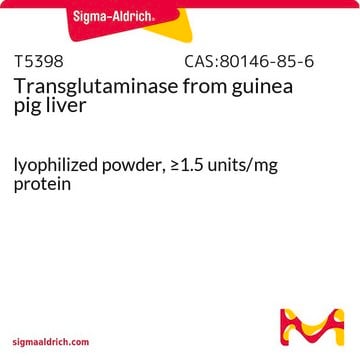17-10263
ChIPAb+ JMJD6 - ChIP Validated Antibody and Primer Set
from rabbit, purified by affinity chromatography
Synonym(s):
JMJD, jumonji domain containing 6, Phosphatidylserine receptor, Lysyl-hydroxylase JMJD6, Jumonji domain-containing protein 6, JmjC domain-containing protein 6, Peptide-lysine 5-dioxygenase JMJD6, Histone arginine demethylase JMJD63, Protein PTDSR
About This Item
Recommended Products
biological source
rabbit
Quality Level
clone
polyclonal
purified by
affinity chromatography
species reactivity
human
species reactivity (predicted by homology)
Xenopus (based on 100% sequence homology)
manufacturer/tradename
ChIPAb+
Upstate®
technique(s)
ChIP: suitable
western blot: suitable
NCBI accession no.
UniProt accession no.
shipped in
dry ice
General description
The ChIPAb+JMJD1C set includes the JMJD1C antibody, a Normal Rabbit IgG, and control primers which amplify a 110 bp region of ChIP Primers, human β-globin. The JMJD1C and negative controls are supplied in a scalable "per ChIP" reaction size and can be used to functionally validate the precipitation of JMJD1C -associated chromatin.
Specificity
Immunogen
Application
Representative lot data.
Sonicated chromatin prepared from HeLa cells (1 X 10E6 cell equivalents per IP) were subjected to chromatin immunoprecipitation using 1.4 µg of either Normal Rabbit IgGor Anti-JMJD6 and the Magna ChIP A Kit (Cat. # 17-610). Successful immunoprecipitation of JMJD6 associated DNA fragments was verified by qPCR using ChIP Primers, human β-globin as a positive locus, and β-actin promoter primers as a negative locus. (Figure 2). Data is presented as percent input of each IP sample relative to input chromatin for each amplicon and ChIP sample as indicated.
Please refer to the EZ-Magna ChIP A (Cat. # 17-408) or EZ-ChIP (Cat. # 17-371) protocol for experimental details.
Western Blot Analysis:
Representative lot data.
HeLa nuclear extract was resolved by electrophoresis, transferred to PVDF membrane and probed with Anti-JMJD6 (1 µg/mL). Proteins were visualized using a Donkey Anti-Rabbit IgG conjugated to HRP and chemiluminescence detection system.
Arrow indicates JMJD6 (~46 kDa). (Figure 3).
Immunocytochemistry Analysis:
Representative lot data.
Confocal fluorescent analysis of A431, HeLa cells using Anti-JMJD6 (Red). Actin filaments have been labeled with Alexa Fluor 488 dye-
Phalloidin (Green). Nucleus is stained with DAPI (Blue). This antibody positively stains the nucleus. (Figure 4).
Epigenetics & Nuclear Function
Histone Modifying Proteins
Packaging
Quality
Representative lot data.
Sonicated chromatin prepared from HeLa cells (1 X 10E6 cell equivalents per IP) were subjected to chromatin immunoprecipitation using 1.4 µg of either Normal Rabbit IgG or Anti-JMJD6 and the Magna ChIP® A Kit (Cat. # 17-610). Successful immunoprecipitation of JMJD6 associated DNA fragments was verified by qPCR using ChIP Primers, human β-globin (Figure 1).
Please refer to the EZ-Magna ChIP A (Cat. # 17-408) or EZ-ChIP (Cat. # 17-371) protocol for experimental details.
Target description
Physical form
Concentration: 0.7 mg/mL
Normal Rabbit IgG. One vial containing 125 µg of Rabbit IgG in 125 µL of storage buffer containing 0.05% sodium azide. Store at -20°C.
ChIP Primers, human β-globin. One vial containing 75 μL of each primer (5 μM) specific for the human β-globin promoter. Store at -20°C.
FOR: AGG ACA GGT ACG GCT GTC ATC
REV: TTT ATG CCC AGC CCT GGC TC
Storage and Stability
Note: Variability in freezer temperatures below -20°C may cause glycerol containing solutions to become frozen during storage.
Analysis Note
Includes normal rabbit IgG and primers specific for human β-globin.
Other Notes
Legal Information
Disclaimer
Storage Class Code
12 - Non Combustible Liquids
Flash Point(F)
Not applicable
Flash Point(C)
Not applicable
Certificates of Analysis (COA)
Search for Certificates of Analysis (COA) by entering the products Lot/Batch Number. Lot and Batch Numbers can be found on a product’s label following the words ‘Lot’ or ‘Batch’.
Already Own This Product?
Find documentation for the products that you have recently purchased in the Document Library.
Our team of scientists has experience in all areas of research including Life Science, Material Science, Chemical Synthesis, Chromatography, Analytical and many others.
Contact Technical Service








